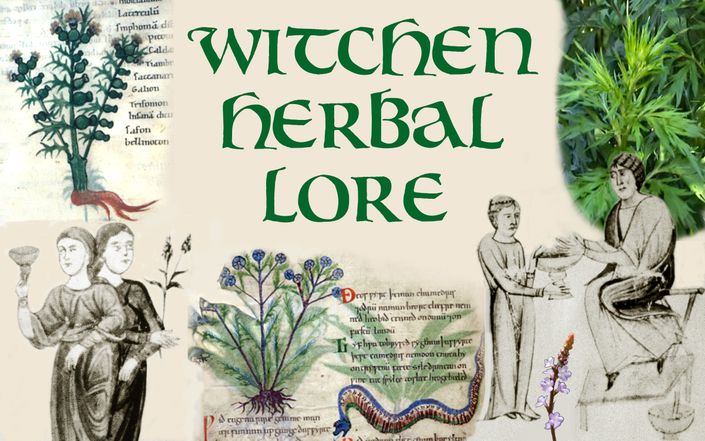
As Samhain / All Hallows Eve approaches, we'll dive into the lore, chants, and rituals of sacred plants, including Mugwort, Hypericum, Mandrake, Rue, Vervain, Rowan-berry and the Daturas. The Nine Herbs Charm in Old English, the lybbestre (“medicine woman”) and wyrtgaelstre (“herb-chantress”), among other folk names for women healers. Herbs of the Midsummer garlands and bonfires; on that Eve, sitting under Hyldemoer, Mother of the Elderberry Tree, to watch for the elven procession pass by. Italian herbalists who healed with flower oils, Bulgarian vrachky healers, Scots and Irish “fairy doctors,” German “measurers,” and Slavic “whisperers.” Herbalists who sing praise songs to the plants in gathering, tell them why they are needed to cure, and sprinkle offerings into the Earth. We'll touch on healing by chant, touch, whisking, smoking, lustration, curing stones, tying herbs on with knotted yarn, and passing children through hoops or "elf-bores” (natural openings in trees).
Pluck will I the fairy-wort with expectation from the fairy bower
To overcome every oppression… There is nothing the sun encircles
but is to her a sure victory. —Scottish incantation
Course Curriculum
-
StartCourse description
-
StartVideo I: Herbs, herb charms, and herbalists (37:41)
-
StartVideo II: More herbs, flower oils, and sacred trees (26:55)
-
StartVideo III: Flying ointments, herbal goddesses, healing charms (23:56)
-
StartDiscussion: Audio
-
StartNames of the Witch: book excerpt
-
StartHenbane seed stash in Roman-era Netherlands
-
StartGaelic Names of Plants, 1883 (pdf download)
-
PreviewAshkenazi Herbalism, by Deatra Cohen and Adam Siegel
